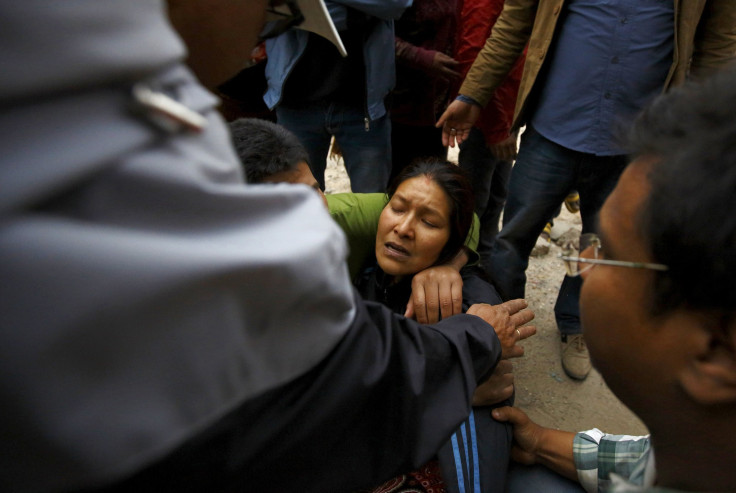Nepal Earthquake: Death Toll Crosses 1,400; Search On For Survivors

This story has been updated.
Update, 2:07 p.m. EDT: Authorities in Nepal say the current death toll of 1,500 stemming from a major earthquake that hit the country Saturday could triple during the next 24 hours. The nation's information minister, Minendra Rijal, told BBC News experience led him to believe the possibility that 4,500 people could be found dead was realistic.
In addition to its human toll, the quake also knocked out power lines and took out cell networks, Unicef, the United Nations Children's Fund, said via Twitter, although others reported the government had cut off electricity.
Original Article Appears Below
The search for survivors in quake-hit Nepal is on in full force after a magnitude 7.8 earthquake struck the country on Saturday morning. While the death toll currently stands at just over 1,400, including over 540 deaths recorded in the Kathmandu valley alone, the number is likely to increase as many are believed to be trapped under rubble.
"We need support from the various international agencies which are more knowledgeable and equipped to handle the kind of emergency we face now," Nepali Information Minister Minendra Rijal reportedly said. The government has also declared a state of emergency in the affected regions.
In addition to the Nepal quake -- which was described as a shallow one at only 9 miles deep -- tremors were felt across India, Bangladesh and Tibet. Dozens of people have died in parts of India and Bangladesh, according to local media reports. The quake also triggered an avalanche on Mount Everest, killing at least 18 people. More climbers are expected to be trapped on the mountain's slopes.
Several international aid agencies and governments, including China, India, Singapore and the U.S., have pledged to step in with disaster assistance. The Indian government has already sent disaster-response teams to Nepal, and said that it would do "everything within its capability to be of help to Nepal in this difficult moment," according to media reports.
The U.S. is also sending a disaster-response team to Nepal and has reportedly released an initial $1 million to address its immediate needs.
Saturday's quake is believed to be one of the worst to hit the Himalayan nation since 1934. Western Nepal is particularly vulnerable to earthquakes, where there is a pent-up pressure from friction between the northern Eurasia plate and the Indian plate.
In addition to the loss of life, the earthquakes and aftershocks -- at least 16 according to reports citing USGS -- also damaged several historic buildings in the country. The Dharahara Tower -- a Unesco- recognized building in Kathmandu built as a watchtower in the 1800s -- has reportedly been reduced to rubble.
"This earthquake is the nightmare scenario," Ian Kelman of the UCL Institute for Risk and Disaster Reduction in London, told Reuters. "The country has ... suffered terrible conflicts, poor governance, and heart-wrenching poverty, all of which created and perpetuated the vulnerability which has been devastatingly exposed during the shaking."
© Copyright IBTimes 2024. All rights reserved.






















